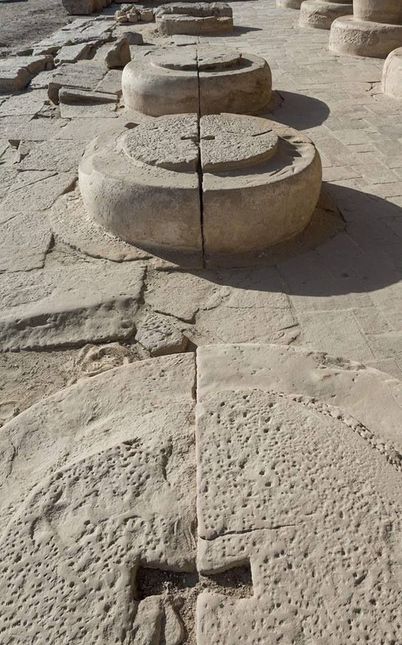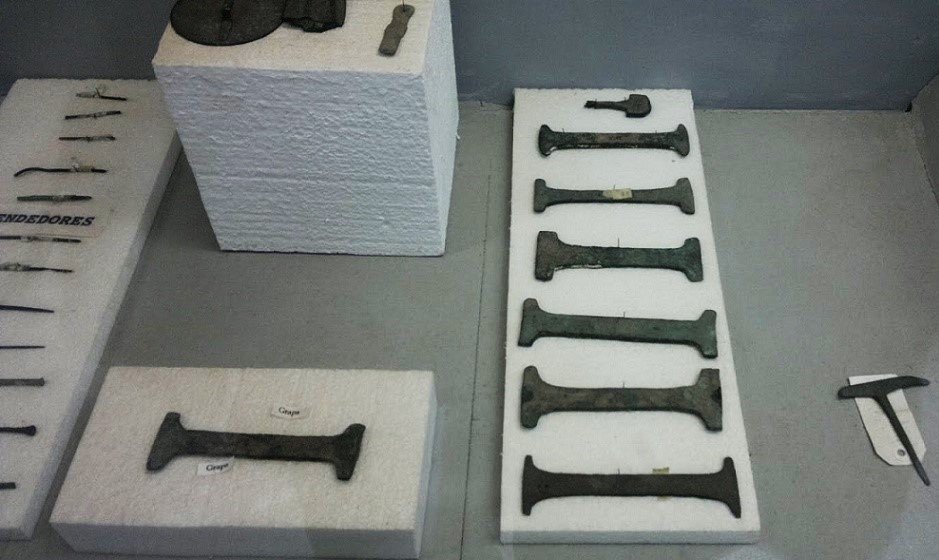I then went on to read most of David Hatcher Childress' books - I would order them through interlibrary loan. Not only were his books self-published but he ran his own publishing company.
I found the books very entertaining and my dad thought it was funny as I shared the books with him. My dad had taken us to Mayan pyramids and the Mexican Pyramids - and he had books of some of the early explorers of megaliths.
Cuzco - difference between Spanish, Inca, and mysterious ancient megaliths
So then Jason Colavito - who critiques the "Ancient Astronauts" t.v. series, wrote a couple scathing exposes on David Hatcher Childress - I have not read them. But he points out that at first there never was the claim that "ancient aliens" made these megaliths. Only that ancient humans had some kind of secret advanced technology. But now apparently "ancient aliens" are considered to be a worthy source as well.
The Stone of the Pregnant Woman at Baalbek Lebanon and similar stones at The Temple Of Jupiter. That stone and another like it were left in the quarry. How do you quarry, transport and place a stone weighing 1000 to 1200 tons ? Do you think the Romans could do this ?But there is one thing that David Hatcher Childress is convinced of - there was some kind of global culture that built these megaliths. He notes for example the same kind of "knobs" on huge megalith blocks in both Egypt, the Mediterranean and Cuzco Peru - to help move the stones apparently.
So he mentions the "keystone cuts" again in this 2000 book
He also speculates on the existence of a sunken city in Lake Titicaca and reveals new evidence that the Sumerians may have arrived in South America over 4,000 years ago. Childress demonstrates that the use of “keystone cuts” with metal clamps poured into them to secure megalithic construction was an advanced technology used all over the world, from the Andes to Egypt, Greece and Southeast Asia. He maintains that only power tools could have made the intricate articulation and drill holes found in extremely hard granite and basalt blocks in Bolivia and Peru, and that the megalith builders had to have had advanced methods for moving and stacking gigantic blocks of stone, some weighing over 100 tons.
https://davidhatcherchildress.com/ancient-technology-peru-bolivia
One of his key pieces of evidence is this "Fuente Magna" bowl found in Bolivia - that Dr. Clyde Winters claims is proto-Sumerian (Elamite or Afro-Asian)
Which gets debunked here
O.K. so it's difficult to appreciate the Childress claim on the "keystone cuts"- until you see the actual evidence - as he presents in this 2002 NEXUS talk he gave - on youtube.
So here is one of his later lectures where he speculates more about ancient aliens and Tesla technology
I don't agree with the "ancient alien" b.s. but I do find the empirical global evidence of the "keystone cuts" to be truly fascinating!
So in this book David Hatcher Childress argues that the "keystone cuts" indicate some older lost civilization that the Peruvians don't know about.
Keystone Cuts from around the world.
The Mystery of Keystone Cuts in Cambodia video youtube
Ancient metal clamps discovered on megaliths, temples and other prehistoric monuments worldwide are one of the greatest unsolved ancient mysteries of all time. Why would the builders use or need a small metal clamp to hold large stone blocks in place? How did this technology spread to ancient Egypt, Pre-Columbian Peru and Cambodia thousands of years ago? These countries are separated by thousands of miles. Who taught our ancestors how to use this technology?
The use of metal clamps in T-Grooves has been discovered in Tiahuanaco, Ollantaytambo, Koricancha and the site of Yuroc Rumi, Vilcabamba. These clamps were also used on the Parthenon, on buildings in Mesopotamia, Egypt and Cambodia.
Some scientists have suggested the clamps were for ceremonial use. Other researchers point out that ancient metal clamps served for keeping the blocks together, so they would harden out in the right position. Several imprints show that metal clamps intended to join huge blocks of stone that our modern machines cannot lift.
Keystone Cuts in Armenia:
Keystone cuts in Peru:
So the hypothesis is that this was for some secret Tesla water power that ran through the stone.
Metal clamps used in the keystone cuts in Peru.
But radiocarbon dating argues the earliest of these sites in Peru was only around 1200 BCE.
So he argues that Cham of Cambodia is related to the Khemet of Egypt for ancient alchemy from Ethiopia - pretty cool!






No comments:
Post a Comment